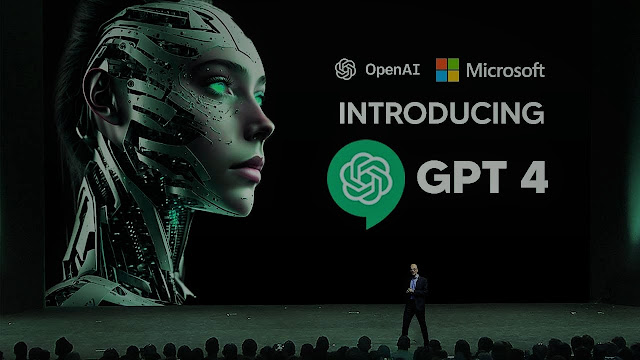OpenAI has once again proven its position as a leading artificial intelligence (AI) research company with the release of its highly anticipated GPT-4. The fourth generation of the popular GPT series, GPT-4 boasts an impressive range of capabilities that far surpasses its predecessors.
According to OpenAI, GPT-4 is state-of-the-art, and it's not hard to see why. With 10 trillion parameters - nearly four times that of its predecessor, GPT-3 - GPT-4 has the potential to revolutionize various industries, from natural language processing to image recognition.
GPT-4's release has caused a stir in the AI community, with experts predicting that it will set a new standard for AI language models. Its ability to process and analyze multimodal data sets it apart from other AI models, making it more powerful and versatile.
But the road to GPT-4 was not without its challenges. OpenAI faced significant hurdles during its development, such as the need to create algorithms capable of handling the vast amount of data GPT-4 could process. Despite facing obstacles, OpenAI utilized its advanced technology and knowledge to create an innovative AI model. The organization has now unveiled its latest and greatest multimodal AI, GPT-4. In this article, we will delve into the details of GPT-4 and its capabilities.
What is GPT-4?
GPT-4 is a language model developed by OpenAI that uses deep learning techniques to generate human-like text. In contrast to its forerunner GPT-3, which was exclusively a language model for text, GPT-4 is a multimodal AI that can generate and comprehend text, images, and videos. It is trained on an enormous dataset consisting of over 1 trillion parameters, making it one of the largest language models to date.
How does GPT-4 work?
GPT-4 uses a technique called deep learning, which involves training a neural network on a massive dataset. The neural network comprises numerous layers, with each layer responsible for processing a distinct aspect of the input data. In the case of GPT-4, the input data consists of text, images, and videos. The neural network processes this data to generate outputs that are human-like in nature.
GPT-4 possesses an exceptional attribute in that it can execute a range of tasks without requiring any fine-tuning, including language translation, text summarization, video and image captioning, and question-answering, among others. This is made possible due to its large dataset and its ability to learn from diverse inputs.
What are the capabilities of GPT-4?
As a multimodal AI, GPT-4 has several capabilities that set it apart from other language models. Some of its key capabilities include:
Text Generation:
GPT-4 can generate high-quality human-like text on a variety of topics. This can be advantageous for various applications, including content creation, chatbots, and other functions that necessitate natural language processing.
Image and Video Captioning:
GPT-4 can generate captions for images and videos that accurately describe the content. This can be useful for applications such as automatic image and video tagging.
Language Translation:
GPT-4 can translate text from one language to another with high accuracy. This can be beneficial for applications that necessitate support for multiple languages.
Text Summarization:
GPT-4 can summarize long pieces of text into a shorter, more concise version. This can be useful for applications such as news aggregation and document summarization.
Question-Answering:
GPT-4 can answer questions posed in natural language. This can be useful for applications such as customer support chatbots and search engines.
What are the potential applications of GPT-4?
The potential applications of GPT-4 are vast and diverse. There are various fields where this technology can be implemented, including:
Content Creation:
The potential applications of GPT-4 include generating top-notch content for diverse industries, such as journalism, marketing, and advertising.
Chatbots:
GPT-4 can be used to create chatbots that can converse with users in a natural and human-like manner.
Image and Video Tagging:
The automatic tagging capability of GPT-4 can simplify content searches by enabling images and videos to be tagged automatically.
Multilingual Support:
GPT-4 can be used to translate content into multiple languages, making it easier to reach a global audience.
Search Engines:
GPT-4 can be used to improve the accuracy and relevance of search results by understanding natural language queries.
What does GPT-4 mean for the future of AI?
The possibilities are endless. This technology could advance significantly in fields like healthcare by analyzing many data sets to spot diseases in their early stages. It does this by processing multimodal inputs. It could also revolutionize the way we communicate, making language processing more sophisticated and natural.
Conclusion
A notable development in artificial intelligence, especially in natural language processing, is GPT-4. This technology is highly adaptable and powerful, as it can generate text that closely mimics human speech, understand natural language queries, and perform diverse tasks without requiring extensive tuning. Like any technology, there can be obstacles to overcome and moral issues to consider. GPT-4, however, marks a substantial advancement in the field of artificial intelligence, and its prospective applications are both intriguing and promising.





0 Comments